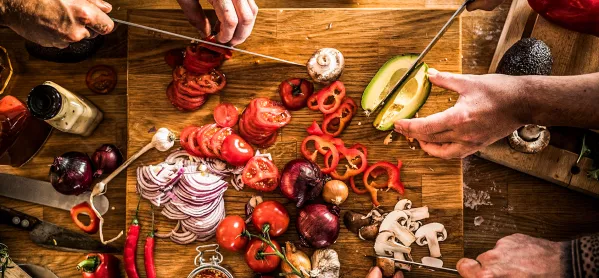How to build a sustainable school improvement model

There’s a lot we can learn about school improvement from the art of cooking.
Because just like a great dish is the result of carefully combined ingredients, school improvement is about using our resources to produce something greater than the sum of our parts.
Of course, how we approach this will vary. I have friends who can produce a great meal from a random collection of products. Whereas I need to work through a step-by-step recipe, and even then the meal will often not turn out as hoped.
Similarly, while some leaders move from issue to issue, delivering improvement without pause, most leaders require careful planning, without which their well-intended strategies can stall or even fail.
But whatever approach you take, there are some golden rules that can help guide any school improvement journey.
School improvement: don’t look for silver bullets
Three years ago, in an article for this magazine, I suggested that we should not get sucked into searching for silver bullets by studying other trusts and trying to replicate what they have done.
Instead school improvement should be more subtle. A leader should spend time searching out what good practice already exists before unlocking the staff potential that is present.
- How we restructured our multi-academy trust
- Seven practical ways our MAT is tackling attendance
- Could a “Tinder for trusts” help match MATs and schools?
But this must then be considered through the lens of your own setting; the context, the circumstances and what the desired end goal is. By doing this you ensure that you are truly focused on what you need - not what has worked for someone else.
Too much, too soon
Following on from this, it is important to avoid trying to do too much at once and, as a result, failing to really improve anything or even risking making everything worse.
It’s easy to understand why this happens. We have identified things we think are wrong and want to change them as soon as possible.
But this can lead to staff becoming overloaded, losing their confidence and, in the worst scenario, leaving the school or even the profession.
As such, a key element of school improvement is working with the ingredients that we have, and the teaching workforce is probably the most important of them.
So rather than overhauling multiple systems at once, it is important to make just one or two changes at a time. This stands whether you are introducing a new behaviour policy, a new phonics scheme or even a new management information system.
Once you’ve made a change, do everything you can to embed it before moving on. Working more slowly will also allow you to see what has and hasn’t been successful.
The right pace is vital
Just as you don’t want to cook everything on a high heat, school improvement journeys need to be paced appropriately.
After all, if we move too fast we risk spoiling things - perhaps by alienating staff or not giving a good idea the time to truly come to fruition.
This means you have to accept that in the beginning people will need time and won’t always get it right, and that there may be a bit of trial and error along the way.
This is especially important for leaders joining a new school. You might think that what has worked for you in the past will work again - but in a new setting you will need time to embed ways of working and ensure that everyone is on board. If that means going back to basics then so be it.
Seek advice
Finally, do not be afraid to take advice and guidance from colleagues.
In one of my schools, we were working on learning walls. I asked a middle leader what they thought they could do to help staff develop strong examples for their school.
They wanted to ask another school for advice but - mindful of my first point here - I suggested that they should build a “WAGOLL” (“What a good one looks like”) learning wall to show what they wanted to produce.
That same evening, other teachers viewed the learning wall and decided to use the same model. On my next visit, the learning walls were consistently strong.
School improvement is not easy. Yet if you take it slowly, work with what you’ve got and add new things when required, you will be amazed what you can produce as a team. That is a recipe to be proud of.
Paul K Ainsworth is an education director of Infinity Academies Trust. His latest book is No Silver Bullets 2.0: heart and soul of school improvement
For the latest education news and analysis delivered directly to your inbox every weekday morning, sign up to the Tes Daily newsletter
You need a Tes subscription to read this article
Subscribe now to read this article and get other subscriber-only content:
- Unlimited access to all Tes magazine content
- Exclusive subscriber-only stories
- Award-winning email newsletters
Already a subscriber? Log in
You need a subscription to read this article
Subscribe now to read this article and get other subscriber-only content, including:
- Unlimited access to all Tes magazine content
- Exclusive subscriber-only stories
- Award-winning email newsletters



